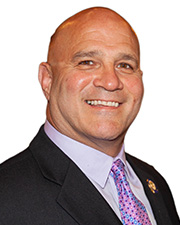


As the workplace continues to evolve post-pandemic, the conversation has shifted from whether employees should return to the office to how we can make that return meaningful. While hybrid and remote work remain popular – according to WFH Research, 25% of paid workdays in 2024 were remote, compared to just 7% pre-pandemic – many organizations are reintroducing in-office expectations. Yet, with only 10% of remote-capable employees preferring full-time on-site work, per a Gallup poll, the challenge is clear: how do employers make the office a desirable place for people to work?
The answer lies in design. A thoughtfully designed workplace can do more than house employees; it can energize, support, and inspire them. Here’s how interior design can help organizations create office environments that people are excited to return to.
Bring the Outdoors In
Biophilic design is based on the idea that humans have an innate connection to nature. Incorporating natural elements into office design can improve employee well-being and productivity. Biophilic design connects people with nature through elements like natural light, greenery, water features, and organic textures. These features don’t just beautify a space, they reduce stress, enhance focus, and boost creativity.
To be most effective, biophilic design should engage all five senses. The sound of a gentle water feature, the texture of mossy surfaces, or the scent of fresh greenery can transform a sterile office into a calming, restorative environment. These sensory experiences are especially powerful for employees transitioning from the comfort of home. Examples of biophilic design include living walls, indoor gardens, and the use of natural materials like wood and stone. These elements can create a calming and inspiring environment that helps employees feel more connected to nature.

Design for Movement and Choice
Rigid, one-size-fits-all workspaces are a thing of the past. Today’s offices must support flexibility, both physically and psychologically.
Multipurpose lounges, collaborative zones, and quiet nooks allow employees to choose how and where they work. Flexible workspaces are essential for accommodating different work styles and preferences. Providing employees with options for how and where they work can increase satisfaction and productivity. For example, open-plan offices with collaborative zones can encourage teamwork, while quiet nooks and private rooms can provide spaces for focused work.
In addition to flexible workspaces, ergonomic furniture and adjustable desks can promote movement and reduce the health risks associated with prolonged sitting. Research has shown that standing desks can reduce back pain and improve overall health. Additionally, lighting and temperature should be adaptable, with room-specific controls or personal climate devices that let employees tailor their environment to their comfort.
Recreate the Comforts of Home
To compete with the convenience of remote work, offices must offer amenities that enhance daily life. Fitness rooms, wellness spaces, and food service areas can make the office feel less like a place of obligation and more like a destination.
Creating a comfortable and inviting environment can also involve incorporating elements of home design, such as cozy break areas, private phone rooms, and thoughtfully designed pantry. These spaces can help employees feel more at ease and more productive.
Consult with an Expert
Interior designers bring more than just aesthetic expertise; they understand how space influences behavior, mood, and performance. By partnering with interior design professionals, organizations can create environments that reflect their culture, support employee well-being, and make the return to the office not just tolerable, but desirable.
Design experts can assist organizations in staying up to date of the latest trends and innovations in office design. This can include integrating technology to create smart offices, utilizing sustainable materials, and designing spaces that promote health and wellness. By focusing on flexible workspaces, ergonomic furniture, and enticing amenities, organizations can create an inviting and productive environment that meets the diverse needs of their employees and inspire a successful return to the office.
Megan Ballato, CID, IIDA, NYSCEO is senior project interior designer and Christiana Suppa, AIA, NCIDQ, is senior project architect at H2M architects + engineers, Melville, NY.




